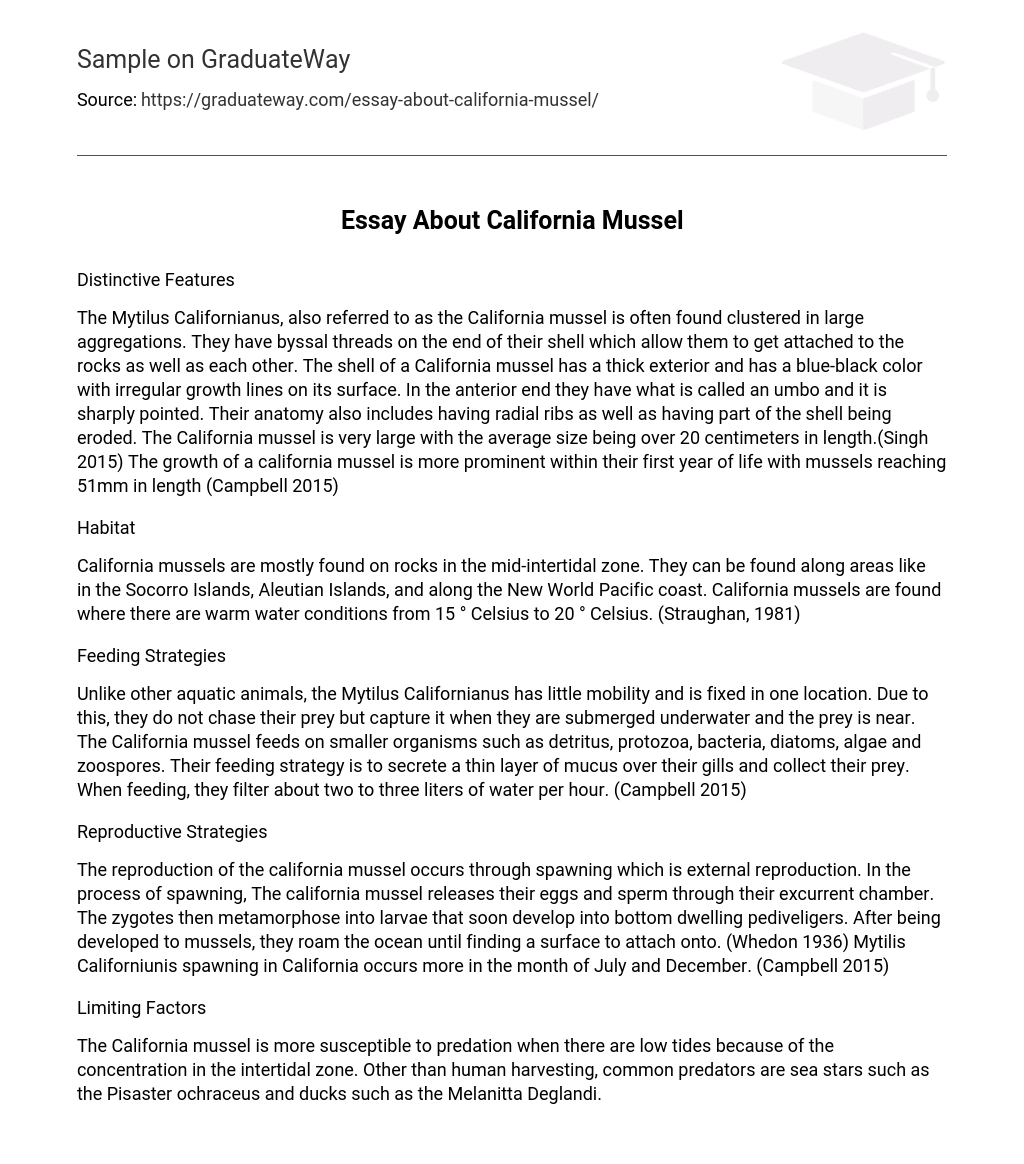Distinctive Features
The Mytilus Californianus, also referred to as the California mussel is often found clustered in large aggregations. They have byssal threads on the end of their shell which allow them to get attached to the rocks as well as each other. The shell of a California mussel has a thick exterior and has a blue-black color with irregular growth lines on its surface. In the anterior end they have what is called an umbo and it is sharply pointed. Their anatomy also includes having radial ribs as well as having part of the shell being eroded. The California mussel is very large with the average size being over 20 centimeters in length.(Singh 2015) The growth of a california mussel is more prominent within their first year of life with mussels reaching 51mm in length (Campbell 2015)
Habitat
California mussels are mostly found on rocks in the mid-intertidal zone. They can be found along areas like in the Socorro Islands, Aleutian Islands, and along the New World Pacific coast. California mussels are found where there are warm water conditions from 15 ° Celsius to 20 ° Celsius. (Straughan, 1981)
Feeding Strategies
Unlike other aquatic animals, the Mytilus Californianus has little mobility and is fixed in one location. Due to this, they do not chase their prey but capture it when they are submerged underwater and the prey is near. The California mussel feeds on smaller organisms such as detritus, protozoa, bacteria, diatoms, algae and zoospores. Their feeding strategy is to secrete a thin layer of mucus over their gills and collect their prey. When feeding, they filter about two to three liters of water per hour. (Campbell 2015)
Reproductive Strategies
The reproduction of the california mussel occurs through spawning which is external reproduction. In the process of spawning, The california mussel releases their eggs and sperm through their excurrent chamber. The zygotes then metamorphose into larvae that soon develop into bottom dwelling pediveligers. After being developed to mussels, they roam the ocean until finding a surface to attach onto. (Whedon 1936) Mytilis Californiunis spawning in California occurs more in the month of July and December. (Campbell 2015)
Limiting Factors
The California mussel is more susceptible to predation when there are low tides because of the concentration in the intertidal zone. Other than human harvesting, common predators are sea stars such as the Pisaster ochraceus and ducks such as the Melanitta Deglandi.





